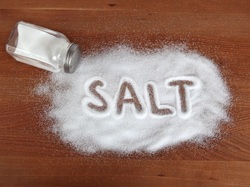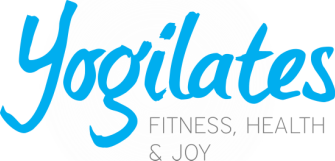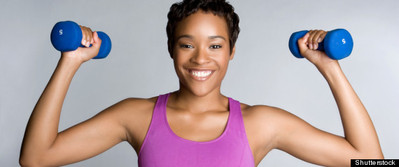
Now, I don’t really put much salt on my food – a pinch in the water when boiling grains or pasta. A little on my salad, and on meat, but I never use the salt shaker at meals. I even eat my egg whites sans salt. The truth is we don’t usually over salt our foods ourselves. The real culprits for our high sodium diet are packaged foods and sauces. Obviously, snacks are loaded with salt – chips, pretzels, crackers, even most dried nuts are also heavily loaded with sodium. It is also very prevalent in cereals. You think you’re being healthy by eating that high fiber cereal, but you’re consuming a ton of sodium in most of them. Grape Nuts for example has 290mg of sodium per half-cup serving. That is around 30% of the total recommended dietary daily allotment. Funny thing, on the website Livestrong.com, the so-called experts highly recommend Grape Nuts and falsely state that its sodium content is only 5% of total recommended amount. Even based on the old dietary value of 2,400mg of sodium per day, the nutrition label on the side of the cereal box says it is 12%, not Livestrong’s 5% of total dietary value. In any case, you have to read the labels and just know all those packaged ready to eat cereals have sodium added. One of my favorite morning meals is a bowl of Hodgson Mill MultiGrain cereal, which is high in fiber and also has flaxseed and soy. It is like quick oatmeal (ready in 5 minutes), only it taste a lot better and is even better for you. Oh, and its sodium content is ZERO.
The other main culprit in our salty diets is prepared sauces and soups. Look at the labels of any pasta sauces and you will see how high they are in sodium. And for you bean lovers, watch out for canned beans. I just looked at a can of black beans from Goya – 460mg sodium per serving. Soups are just as bad if not worse. For example; ProgressoLight brand soups (endorsed by Weight Watchers and Livestrong) have huge amounts of sodium. The Progresso Light Chicken and Dumpling soup label says it has 690mg per serving. The sad thing is that people see the cover of these products and believe they are healthy. The actually believe the marketing hype and their mouthpieces in the media and that is why the overall health of our country is still getting worse.
The report by the USDA does acknowledge that changing our sodium intake will take time because of acquired tastes. They state that for the first couple of weeks, people on a restricted sodium diet craved salty foods. But, within a fairly short time, they no longer craved salty foods (8 weeks or less). I know from my own experience that if I eat salty foods one day, the next day I crave that flavor again. But, if I don’t eat salty foods, I not only don’t crave them, I find I start to taste more of the natural flavors in foods and appreciate the subtle flavors from other spices. Most cooks know that you can substitute lemon juice for salt in most foods and get the same taste bud effect. Although not recommended for children, adults would do well to “heat” up their food with cayenne pepper. The spice has been shown to help digestion, reduce inflammation and have anti-oxidant value. It is especially good to add to soups, eggs, and chicken dishes.
Lastly, I want to emphasize how much water your body can retain when you eat salty foods. I literally can gain 5 lbs in one day from eating salty foods and snacks, and it is all water retention in my cells. Sodium gets stored in your muscle and fat cells and sucks in water that ordinarily would be excreted out. I see many clients who look bloated after eating salty foods the night before. The only remedy for this is to drink water and do significant amounts of aerobic exercise (over 30 minutes) to get your cells flushed of the sodium as you sweat. Just sweating from heat exposure isn’t as good. Then, if you sharply restrict your sodium intake, within two or three workouts, your body should have lost the excess water weight.
For more nutritional information, please see my “7 Lifestyle Eating Principles”. Best of luck to all of you and stay healthy!!!



 RSS Feed
RSS Feed
